- JST Home
- /
- Strategic Basic Research Programs
- /
 PRESTO
PRESTO- /
- project/
- Development of Basic Material Conversion Science for Global Environment/
- [Material Conversion] Year Started : 2023
[Material Conversion] Year Started : 2023
Kazuyuki Iwase
Highly efficient electrochemical conversion of carbon dioxide based on precise control of catalyst and electrode structure
Researcher
Kazuyuki Iwase
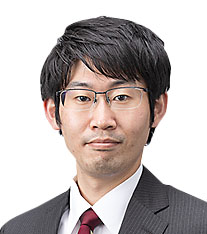
Senior Assistant Professor
Institute of Multidisciplinary Research for Advanced Materials
Tohoku University
Outline
In this study, I aim to achieve carbon dioxide electrolysis with high product selectivity and energy efficiency, which has yet to be achieved in previous studies, through consistent control over the sophisticated synthesis of catalysts involved in the reaction and electrode structure involved in the mass transport of carbon dioxide. In particular, I will focus on controlling the coordination structure of the metal active centers of the catalyst and the porous structure of the catalyst layer of the catalyst loaded electrode. The objective of this research is also to elucidate the design principle of catalytic electrodes that realize highly efficient carbon dioxide electrolysis.
Yohei Ogiwara
Chemical Upcycling of Polyesters
Researcher
Yohei Ogiwara
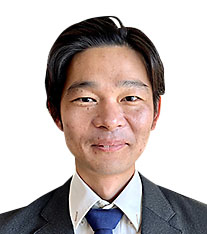
Associate Professor
Faculty of Engineering
Gifu University
Outline
This project aims to develop a catalytic upcycling methodology for the direct conversion of consumed polyesters, such as plastic bottles and fibers, into various value-added fine chemicals. Breaking away from the existing recycling scheme of polyester, which depends on thermal and physical treating methods, it aims to establish a novel and efficient sustainable carbon-recycling system by means of my original organic synthetic chemistry.
Naoki Shida
Electrochemical valorization of chemical wastes using AEM reactor
Researcher
Naoki Shida
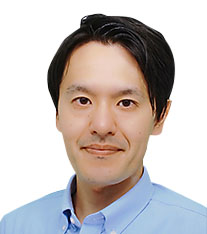
Associate Professor
Faculty of Engineering
Yokohama National University
Outline
Many chemical wastes possess chemically stable structures with highly oxidized states. Such stable chemical wastes can be reduced by excessive energy input, such as the use of high temperature, high pressure, and high energy reagents. However, a mild and clean methodology for valorization of stable chemical wastes is essential for establishing a sustainable chemical industry. In this research, an anion exchange membrane (AEM) electrolyzer is used as an enabler of electrochemical reduction of stable chemical wastes into useful chemicals.
Ryoichi Tatara
Exploring Alkali Metal Ions for Innovative Energy Storage Solutions
Researcher
Ryoichi Tatara

Associate Professor
Faculty of Engineering
Yokohama National University
Outline
While lithium-ion batteries have achieved commercial success and sodium-ion batteries are under intensive development, this research ventures into the realm of heavier alkali metals, specifically rubidium and cesium. This study aims to exploit their unique reaction dynamics, attributed to their large ion sizes, to devise innovative battery materials and establish a comprehensive theoretical framework encompassing all alkali metal ions.
Ryohei Doi
Reduction of organofluorine compounds using hydrogen
Researcher
Ryohei Doi
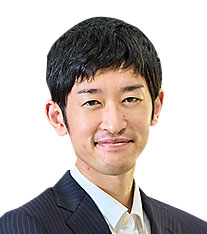
Assistant Professor
Graduate School of Engineering
Osaka University
Outline
In this project, I develop reduction reactions of various organofluorine molecules using hydrogen and base. The reactions would give hydrocarbons and fluoride salt. The combination of homogeneous nickel complexes and hydrogenation catalysts will be examined. For the practical application of this technology, reductive hydrogenation of a mixture of fluorinated molecules, investigation of the effect of other functional groups, recovery of fluoride salt, and a large-scale experiment will be conducted.
Yuka Nakagawa
Simple Conversion of Woody Biomass to Functional Materials using Metal Complex Catalyst
Researcher
Yuka Nakagawa

Program-Specific Assistant Professor
Institute for Chemical Research
Kyoto University
Outline
In this study, we will experimentally demonstrate the capacity to achieve the gentle and single-step disintegration of rigid woody cell walls, as well as the conversion of wood-derived polymers into functional materials, all under mild conditions through the utilization of metal complex catalysts. Furthermore, toward the social implementation of this technology, we shall not confine our focus solely to the catalysts and their reaction efficiency but extend our examination to encompass the optimization of the entire production system, including raw material acquisition and scaling. The overarching objective is to foster the broader utilization and deployment of wood-based chemical products.
Takeshi Matsumoto
Chemical Conversion of Carbohydrate Biomass via Advanced Use of Various Unutilized Resources
Researcher
Takeshi Matsumoto
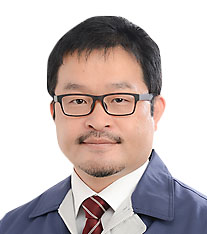
Researcher
Industrial Technology and Environment Research Department, Research Institute of Energy, Environment and Geology
Hokkaido Research Organization
Outline
In this research, taking the recent trend into account where the declining population and falling demand for sugar have induced the sugar stock to increase, the design of a chemical conversion technology of sugar beet and its related products, carbohydrate biomass, into the highly value-added product, i.e., liquid fuels (paraffins), via 5-hydroxymethylfurfural will be focused on. The establishment of this process could provide new added value to sugar beet farming and the sugar industry, as well as contribute to the realization of an environmentally harmonious and sustainable society in Hokkaido.
Koki Muraoka
Data-driven design of zeolite catalysts by atomistic simulation
Researcher
Koki Muraoka

Assistant Professor
Graduate School of Engineering
The University of Tokyo
Outline
This project constructs a zeolite catalyst database that covers countless combinations of zeolite framework topology, composition, atomic positions, active species, and morphology. Large-scale catalyst screening methods are employed to predict zeolites optimal for each path of C1 chemistry. Synthesis conditions necessary to realize the targeted zeolites are predicted.
Kenta Motobayashi
Development of synchronous absorption-electroreduction process of CO2 based on ionic liquids
Researcher
Kenta Motobayashi
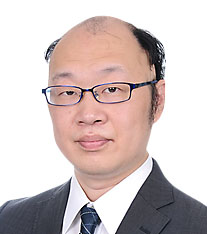
Associate Professor
Graduate School of Engineering
Nagoya Institute of Technology
Outline
In a typical CO2 electroreduction process, CO2 is selectively absorbed into liquid absorbent, separated from it, dissolved into electrolyte, and finaly electroreducted. In this project, we will develop ionic liquid-based bifunctional material working as both absorbent and electrolyte. Such new materials can omit the CO2 separation process consuming near half of the energy required for the whole processe. This leads to synchronous absorption-electroreduction process of CO2 with dramatically enhanced energy efficiency.
Hiroshi Yoshida
Development of catalytic reaction media for chemical transformation of dense phase CO2
Researcher
Hiroshi Yoshida

Associate Professor
Institute of Science and Engineering
Kanazawa University
Outline
A biphasic emulsion consisting of CO2 dissolved expanded liquid (CXL) and H2O is applied to the catalytic reaction media for direct chemical transformation of dense phase CO2 into value added chemicals. The physicochemical properties of CO2 in CXL, such as intermolecular interaction, enhanced solubility of the gaseous substrate, and polarity control, are utilized for efficient CO2 activation. The aqueous phase promotes catalytic turnover through continuous extraction of products, increasing the overall reaction rate for efficient CO2 transformation.













